Prakriti Shrestha: An Alternative Model for Adaptation and Mitigation (Thoughts from Nepal)12/12/2015 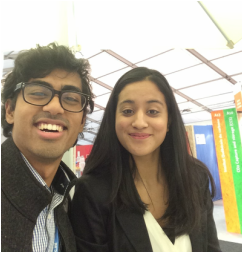 With Rijan Mulmi, a youth representative from Nepal and my cousin! With Rijan Mulmi, a youth representative from Nepal and my cousin! Rijan Mulmi, a Nepali youth representative at COP21, underscored how the current model of development adopted by most western countries and followed by the rest of the world is “unsustainable”. He highlighted the need to reject the status quo and create an alternative development model. First of all, he suggested that this development model should be tailored to meet the needs of specific countries, rather than having a “one size fits all” approach. Secondly, these plans could include building car-free cities, in order to strengthen community bonds and reduce dependence on carbon polluting vehicles. Lastly, Mulmi emphasized that it is time to steer the conversation from the idea of donations to the idea of exchange of skills and knowledge between the developing and developed countries, especially in the issue of climate change. As an example, Mulmi spoke about establishing an institution to transfer Nepali indigenous knowledge about sustainable practices in order to help other nations reach their carbon reduction targets. You may be wondering, what are some of these indigenous practices are and what role do they play in combatting climate change? Luckily, I had the opportunity to interview some representatives of Nepali indigenous groups and I can give you an overview of what I learned. Mr. Tunga Bhadra Rai, a member of the Nepal Federation of Indigenous Nationalities (NEFIN) highlighted that indigenous communities are truly a “part of nature”. His community in Khotang district, located in the north of the country is taught to respect the boundaries of human-nature interactions throughout their lives. For example, they make sure that they only hunt certain species of birds during certain times of the year. Although this community and other indigenous communities may not be aware of the correct jargon surrounding climate change issues, they are personally experiencing its consequences. Mr. Sudarshan Chaudhary, a member of the Tharu community from the Terai region, representing the Youth Federation of Indigeneous Nationalities gave an example of how fisherman are losing their livelihoods because rivers are drying up and dams are being built, not to fulfill the needs of the surrounding communities, but to provide power in city areas. Furthermore, the rising temperatures, along with uncoordinated and non-inclusive government decisions have increased the rates of infectious diseases within the community. For example,the government pushed for steel houses instead of traditional mud houses to be built. Traditional mud houses are much more efficient at maintaining a cool temperature when compared to steel houses, yet government decisions as well as industrialization has led to a removal of a safe and sustainable practice in that community. The next natural question is, how much representation do indigenous groups have at COP21 or within their own governments? Mr. Nagendra Kumar Kumal, a current Member of Parliament and president of the Nepal Federation of Indigenous Nationalities as well as Ms. Pratima Gurung, the General Secretary at Nepal Indigenous Disabled Association (NIDA) described how governments across the world, especially in Nepal, have not yet recognized potential contributions and rights of indigenous people. At COP this year, there is an indigenous pavilion in the public area and there are several events in that pavilion. One of the biggest successes so far during COP21 has been the acknowledgement of indigenous groups’ climate resilient practices in negotiations and in the draft Paris agreement. However, there still seems to be a gap between government priorities and community priorities. While governments may be focusing on receiving financial assistance to help with mitigation and adaption for vulnerable groups, like indigenous people, youth groups from Nepal and indigenous activists have pointed out that financial assistance is not enough. As Mulmi and Rai argue, rather than only viewing indigenous people as victims of climate change and focusing on financial assistance, they should be viewed as key members or actors in combatting climate change and its effects. The knowledge that Indigenous people possess about their environment and their strong collective values that promote conservation and equilibrium can be strong drivers in attaining carbon reduction goals in a sustainable manner.
Let me know what you think of this alternative model!
4 Comments
Sean Eldridge
17/12/2015 11:26:28 am
this post is very informative and the process of transferring knowledge out of and in to indigenous populations is very important, but I just wanted to talk about the idea of a carless town or city. This concept is new to me and sounds very promising; and though i'm not sure how it could be applied with total participation it think it could lead to ideas such as carless Sundays or certain hours of the day when people shouldn't drive. Any kind of steps we can take to lower emissions is a step in the right direction and certainly the less we drive around the better it is for the environment, even if it is only by a small margin. I think public transport options could be very helpful in these hypothetical situations also.
Reply
Kelly Rodriguez
18/12/2015 01:52:05 pm
Culture is key. These indigenous people are very close to the Earth, nature, and can see all these changes going on.And these people are experiencing the issues of climate change due to this They are educated by their own culture, they have knowledge first hand that other people can't get. And can bring their knowledge to effect climate change. Indigenous people should be valued for their knowledge and used in the fight against climate change. I love the idea of an institute where these indigenous people can make a different and essentially teach others their culture and ways of carbon reduction. I just don't think people are aware enough of these small places that are hit so hard with the climate issues.
Reply
Cathy
19/12/2015 02:24:48 pm
I'm glad to see people in developing countries taking an initiative to contribute to minimizing climate change. This supports the idea that those who have first hand experience with a situation tend to have the best knowledge and recommendations. Developed countries tend to approach solutions to worldwide problems with a competitive view. Everyone wants to be the first to produce the best solution but in this case, victims of climate change in Nepal and other countries are the source of the solution. Indeed, developed countries should take advantage of Nepal's alternative model because it is an excellent idea. I'm devastated to hear that citizens don't play an important role in government decisions. Government officials need to listen to the suggestions of the people because the people think with their hearts while government officials thoughts are propelled by greed and competition.
Reply
Amy Brown
18/3/2016 03:44:20 am
Now I can follow all the amazing things you are doing!
Reply
Leave a Reply. |
Categories
All
Archives
March 2024
|
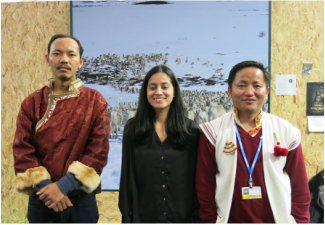
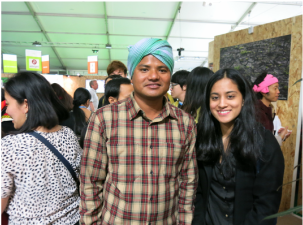
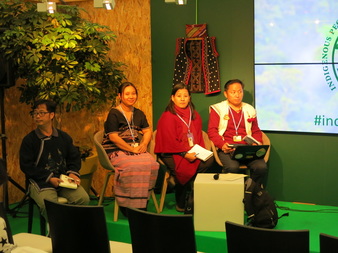
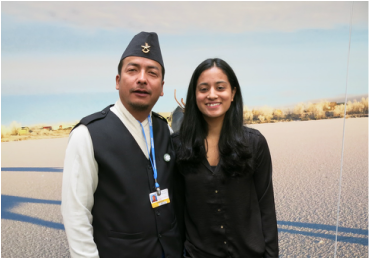
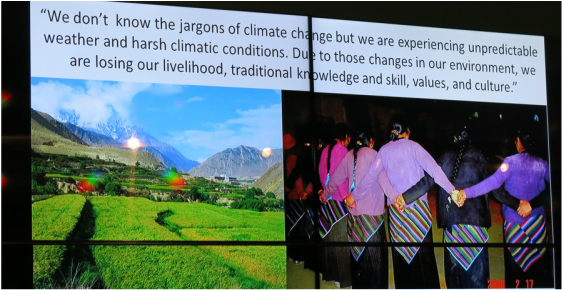
 RSS Feed
RSS Feed
